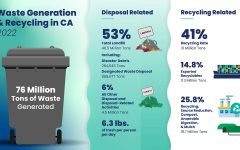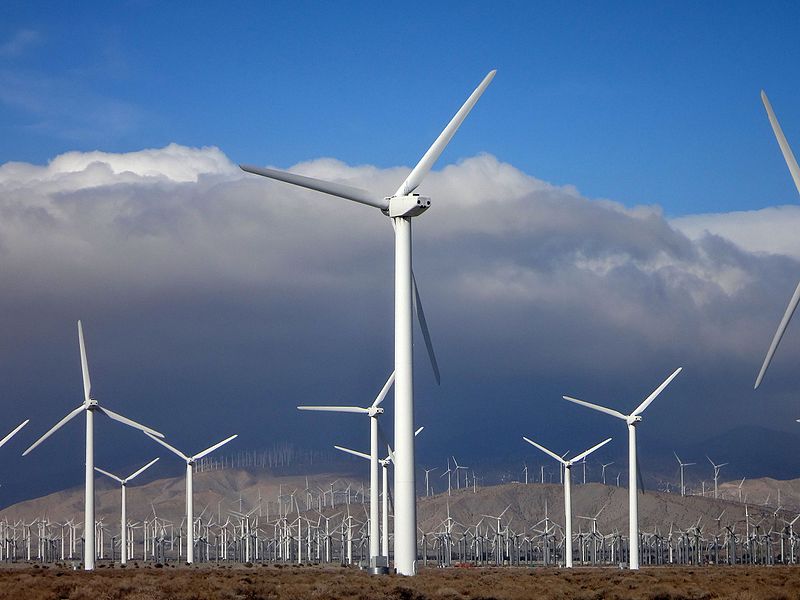
Annual Oil Supply Sources To California Refineries. (Photo: cec.ca.gov)
Ringside: An Overview of California’s Energy Economy
California energy is unaffordable, unreliable, and going to get worse if the legislature doesn’t prioritize it
By Edward Ring, June 27, 2024 2:45 am
 Energy in California is unaffordable and unreliable, and it’s going to get worse if the priorities of the state legislature don’t dramatically shift. The state’s default policy is to create energy scarcity in order to protect the environment, and in the process they are pursuing impractical, grotesquely expensive projects that have the ironic side effect of harming the environment far more than they help the environment.
Energy in California is unaffordable and unreliable, and it’s going to get worse if the priorities of the state legislature don’t dramatically shift. The state’s default policy is to create energy scarcity in order to protect the environment, and in the process they are pursuing impractical, grotesquely expensive projects that have the ironic side effect of harming the environment far more than they help the environment.
Before discussing some of the worst energy ideas coming out of Sacramento, along with some vastly preferable alternatives, it is useful to review the best online sources for quantitative facts about energy and water in California. Here are some of the best.
An indispensable primary source is the Statistical Review of World Energy. Updated every year, this encyclopedic reference provides information on energy production and consumption by nation, breaking it down by type of fuel. For every nation, it also includes comprehensive information on electricity, showing generation by source. There are tremendous insights to be gained from studying this reference. For example, in 2022, over 80 percent of all global fuel inputs came from burning coal, oil, and natural gas. Also, most notably, per capita energy consumption in the United States in 2022 was 283 gigajoules, compared to a paltry 118 gigajoule average for Europeans, and a mere 14 gigajoules per person in Africa. For the moment, never mind the use of what most of us might consider to be an abstruse unit of energy measurement: “gigajoules”. It’s the differing portions that matter, and they aren’t subtle.
Next, turn to these Energy Flowcharts courtesy of the U.S. Lawrence Livermore Laboratory. The interface is fairly self-explanatory, allowing views of multiple entities including the whole world, the United States, and the state of California. One of the benefits of these flowcharts is to easily recognize the proportion of raw fuel inputs (watch out, they gross up the “non-thermal sources” allegedly to show how much combustible fuel they displace, which can mislead the casual observer), as well as the energy outputs which are split between “rejected energy” and “energy services.” The fact that we still waste nearly twice as much of our raw fuel in the form of friction and heat losses is compelling evidence that we need to adopt more efficient technologies. This fact underlies much of the push for electrification. Note these analysts chose Trillion BTUs as their unit of energy. Don’t fret, 1 billion gigajoules is an exajoule, and one exajoule is 948 trillion BTUs. Huh? Have a look anyway. The proportions depicted on these flowcharts are intuitive, and very helpful if you want to understand where we get our energy and how we use it.

Zeroing in on California, this next chart from the U.S. Energy Information Administration shows the state’s energy consumption by fuel. There’s one simple takeaway: In terms of raw fuel inputs, we are still depending on petroleum for 50 percent of our energy, and natural gas for another 30 percent. For all the work we’ve done on renewables over the past 20 years or more, we are exactly on pace with the rest of the world.
Next, from the California Energy Commission, have a look at our own oil production. As the table indicates, we have gone from supplying 61 percent of our in-state oil needs in 1982 to only 23 percent today. This isn’t because we are running out of oil, it’s because our state legislature – abetted by powerful litigants and lobbyists – has decided that importing oil from petrostates is preferable to creating jobs right here. Californians have the option to revive in-state oil production significantly, then draw it down on a reasonable timetable of 20-30 years, all the while perfecting the cleanest, most environmentally responsible practices in the world. Or we can continue to prop up despots whose regard for the environment and labor standards is nonexistent.

When it comes to electricity, the favored unit is gigawatt-hours. According to the California Energy Commission’s report “2022 Total System Electric Generation,” California consumed 287,000 gigawatt-hours in 2022, but only generated 203,000 in-state. And of that in-state production, 96,000 gigawatt-hours came from natural gas – nearly half. California’s last surviving nuclear power plant added another 18,000 (I’m rounding), hydroelectric also 18,000, geothermal a surprising 11,000, and biomass 5,000. The big renewables delivered 40,000 via solar, and 14,000 from wind.
When discussing wind and solar, “capacity” vs. “yield” is often discussed. It is inaccurate to evaluate wind and solar merely based on capacity. The next chart from the California Energy Commission compares total generation (yield) to capacity. Knowing these percentages are essential to understand how much actual power you’re going to get from any intermittent source of electricity. As it is, in 2023, wind generated 14,000 gigawatt-hours, but had an installed capacity of 6,000 megawatts. Since 14,000 gigawatt-hours is equal to 1,600 megawatt-years, that means the yield from wind farms in California was (1,600/6,000) 27 percent. For solar, the yield was 23 percent. And for natural gas – because we only allow these plants to run when the wind isn’t blowing and the sun isn’t shining – the yield was 27 percent.
If you’re still wading through this, the takeaway is simple: Whenever you hear about how many gigawatts a wind or solar farm is going to produce, divide the reported “nameplate capacity” by four and add tons of batteries. That lower figure represents how much these intermittent sources will actually deliver over time in terms of continuous, usable baseload power. And to square the circle – California’s total electricity use in 2022 of 287,000 gigawatt-hours equates to 32 gigawatt-years. Remember that number. It means that Californians draw, on average, 32 gigawatts of electricity from the grid. It fluctuates, of course. Nighttime lows can drop under 20 gigawatts, and summer afternoon highs will top 50 gigawatts.
This is a lot to digest, which may explain why California’s current energy policy is completely dominated by special interests that benefit from the stratospheric prices for energy that come when cheap conventional sources are restricted. It’s easy to claim natural gas power is no longer cost-effective when a natural gas powerplant is only allowed to operate 27 percent of the time. If these plants were permitted to operate at capacity, they would be spreading three times as much electricity revenue over their fixed costs, and the price of electricity to the consumer would come back down to earth.
Next week, expect information about specific energy options for California, including floating offshore wind, natural gas generated electricity with carbon sequestration, and the challenges and opportunities posed by the electrification of California’s transportation and residential sectors.
- Ringside: What is the Future of California’s Republican Party? - December 31, 2025
- Ringside: CA GOP Just Blew $46 Million for Nothing – Here’s How They Can Avoid Repeating That Mistake in 2026 - December 24, 2025
- Ringside: Will the Delta Pumps Operate at Capacity this Winter? - December 18, 2025





Seems like California is the test-kitchen for the rest of the nation and the Democrat party’s “Green” agenda, which is intended to force everyone into their preferred energy & transportation sources, regardless of whether they’re ready for prime-time or not….
Just like the WEF/UN “Agenda 2030” mandates lay out, these communist/globalist lap-dogs are screwing up everyone’s lives & livelihoods with their misguided efforts to “combat climate change”, “the existential threat” …
If that’s truly the case, then why are their lead funders & leaders buying & building luxury properties in coastal areas that are supposed to be under water in X years???
It’s all a scam & grift to enrich those advocating this debacle…
Wind and solar farms are inefficient besides environmentally grotesque. Who produces them? China.
Maybe CARB and all the other state agencies and commissions will have to be accountable to the citizenry now that the Supreme Court has ruled “Chevron is overruled,” as Chief Justice John Roberts wrote in the majority ruling. “Courts must exercise their independent judgment in deciding whether an agency has acted within its statutory authority, as the [Administrative Procedure Act] requires.”
Justice Roberts asserted, “Chevron’s presumption is misguided because agencies have no special competence in resolving statutory ambiguities. Courts do.”